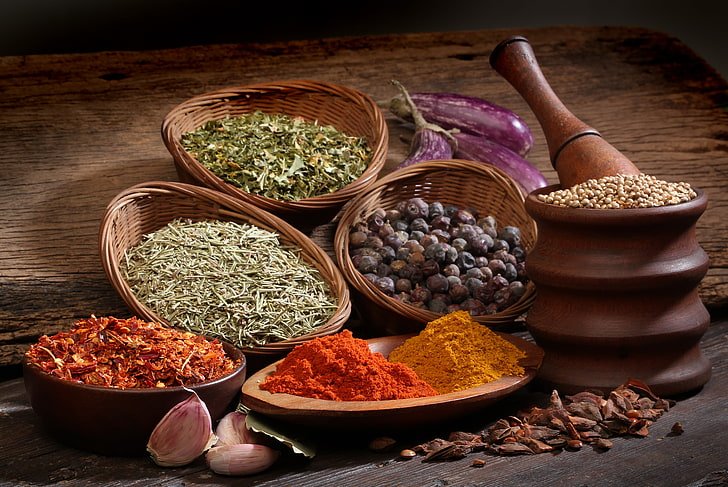
Have you ever sneezed after smelling and or eating a spicy meal or developed hives after enjoying a hot and spicy dish? Most of us can tolerate spices with no problem, but approximately 2% of adults have true spice allergies and related issues. Such allergies are rare, but when they do occur, the reaction can be range from mildly inconvenient to life-threatening.

Spices such as garlic, celery, onion, cumin, mustard, clove, and nutmeg are among the most frequent offenders. Mustard, in particular, is a common allergen, especially in regions where it’s popularly used. Clove and nutmeg, although less frequently reported, but can also provoke strong reactions in sensitive individuals.

Interestingly, sesame, often found in spice mixes, is a well-known for its allergen effects and may show up in few foods recipes made with it unexpectedly.

So how does a spice allergy show itself? Symptoms can be vary, as some people may experience swelling of their lips, nasal congestion, itching (hives), or gastrointestinal issues such as bloating, nausea, or diarrhea. Others might have found respiratory problems or develop a skin rash (contact dermatitis) when, even the spice touches their skin. It’s important to note, however, that not all unpleasant reactions to spicy food are allergies. For example, the burn from chili or wasabi is caused by irritants but it will not affect your immune system.

But for those with a true allergy, the consequences can be much more serious. In some cases, consuming a spice can lead to anaphylaxis in a sudden, severe allergic reaction involving symptoms such as chest tightness, wheezing, facial swelling, vomiting, dizziness, and even loss of consciousness. Without immediate treatment, anaphylaxis can be life threatening.

One especially tricky aspect of spice allergies is that is it cross-reactivity. If you’re allergic to one spice, your immune system might also respond to others with similar protein structures. For example, those allergic to celery might also react to carrots or birch pollen, while individuals with a mustard allergy may need to avoid rapeseed or canola oil. Spice mixes popularly available in grocery stores such as garam masala or curry powder are especially risky as they may contain multiple such spices and can be a triggering ingredients for allergic person.

Diagnosing a spice allergy can be challenging. Standard allergy testing is limited because most spices don’t have commercially available test results and information. Doctors rely heavily during their diagnosis, mostly on your medical history, the information provided by you, along with skin prick tests, blood tests for specific IgE antibodies, and sometimes food challenges, which must always be done under strict medical supervision.

If you’re diagnosed with a spice allergy, the main form of treatment is to strictly avoidance of this spices. This can be difficult initially, especially since the spices are often hidden in many processed foods or not listed clearly on restaurant menus. In the U.S., food labeling laws don’t always require individual spices and ingredients in food to be named on its labels, so reading labels carefully and asking about ingredients is very important practice. Also telling about your food allergies clearly before ordering food at restaurant is very much required for outside food allergies.

For mild symptoms, such as itching or sneezing, oral antihistamines can be helpful. For skin rashes, a topical corticosteroid cream may reduce redness and swelling. However, if you’re at risk for severe reactions, carrying an epinephrine auto-injector (like an EpiPen) is very important. It can be life-saving in the any such scenario of accidental exposure and onset of anaphylaxis.

Living with a spice allergy requires more strict vigilance. Keeping a food note can help to identify the patterns and the potential triggers. If you have a personal or family history of asthma, eczema, or other allergies, your risk of developing a spice allergy may be higher so staying alert is a wise move.

While spice allergies are rare, but they’re not to be taken lightly. With the right information, medical support, and proactive steps, it’s entirely possible to enjoy flavorful meals just with a little more caution and planning.
